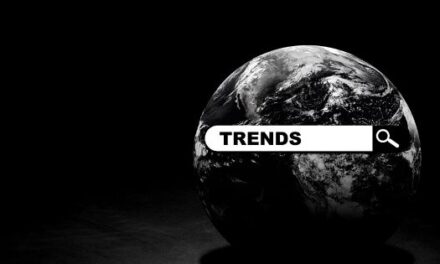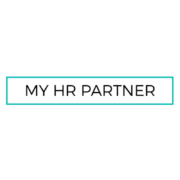At echogravity, we talk to dozens of staffing leaders every month, and their most common marketing priority is, not surprisingly, lead gen. After a tight market in 2023, people are anxious to grow their agencies and regain lost ground.
Staffing leaders often assume their challenge lies in lead generation, but the issue usually runs much deeper. For instance, I recently spoke with an agency owner who was eager to generate more leads. However, when I checked out his website, it was like stepping back into a time machine to 1996 — his site has stretched-out photos, clunky navigation, and no mobile experience, just to name a few problems.
No wonder he isn’t getting any leads.
Lead gen success only happens from a solid branding foundation. Often you think you have a lead gen problem, but in reality you have a branding problem.
At least, that’s what you may realise by the time you finish reading this article.
Lead gen vs. brand: it’s not “either-or”
You attract what you put out there.
I’ve said this to clients so many times it’s practically become my mantra, but I repeat it because it’s true.
When someone visits your website, you have about 0.05 seconds before someone makes up their mind about you. So unless that visitor immediately sees you as reputable, experienced, and worth their time investment, they’ll never convert into a lead.
But often staffing firm owners pit lead gen and brand against each other. A recent article from Harvard Business Review describes this “either-or” mentality.
Traditionally, the two were seen as a trade-off: The brand building was a long-term investment, and performance marketing was about generating revenue in the here and now. The trick was to “balance” them. But brand building is losing out more and more, in large part because performance marketing is considered to be much more closely linked to measurable business results.
Couldn’t have said it better, but I want to emphasize that lead gen and brand awareness should be treated as complementary or even symbiotic. For example:
- Digital ads—a common lead-gen tactic—can boost your brand awareness by 80%
- After seeing a branded ad, a lead is 155% more likely to search for that brand later
- 75% of decision-makers report that thought leadership (generally considered a brand tactic) has prompted them to explore products and services they hadn’t previously considered
On the flip side, we’ve all been on the receiving end of excessive lead-gen efforts (e.g. non-stop cold email campaigns) that leave a bad taste in our mouths. Lead gen without brand considerations can actually be detrimental.
Why lead gen campaigns must rely on brand
Recently, a teammate sent me this quotation from Velocity Partners that’s stuck with me: “We forgot we’re trying to move people. Not ‘personas’ or ‘MQLs’ or even ‘accounts’. People. And people are not decision-making bots—they have elbows and cholesterol and minds of their own and feelings.”
In a world where people are inundated with dry, boring, irrelevant messages, just launching a campaign has no guarantee of success. To be effective, that campaign must resonate with people at a human level.
This is especially relevant in the competitive staffing and recruiting space. To stand out, we need to tap into the deeper motivations of our hiring managers — reflecting their values, acknowledging their struggles, and delivering messages that resonate with them on a core level. When your ideas hit home like that, clients are far more likely to choose you.
It’s like fishing in a crowded lake. Everyone’s using the same bait, so what sets your hook apart? It’s not just about having the flashiest lure; it’s about understanding the fish—what drives them, what they’re really hungry for. When you connect with those deeper motivations, they’ll bite, because you’re not just offering them something shiny—you’re offering what they actually need.
So here are four elements of the brand that, when you dig into them, are critical for lead gen success. Ignore them at your own peril!
Positioning
At its core, brand positioning is about making yourself “favourable, valuable, and credible to the end consumer.” (HubSpot) Your positioning answers three fundamental questions:
- Why should the customer work with you now? (i.e. value props and pain points)
- Why should the customer work with you now? (i.e. differentiators)
- Why should the customer work with you now? (i.e. urgency)
For example, you may position yourself as placing hard-to-find technical talent (value prop) by leveraging your unique talent networks (differentiators) to fill open positions that are slowing business growth (urgency).
Without effective positioning, your audience has no reason to pay attention to you. Which means you’ll struggle to generate leads.
Some tips on positioning your recruiting agency:
- Make yourself relevant to what the end client wants—always speak their language
- Be consistent—if you keep changing your positioning, no one will know who you are and what you stand for
- Maintain credibility by backing up your claims with success stories
Messaging
A lot of people conflate positioning and messaging, probably because they’re so interrelated. To me, the difference is this:
- Positioning is an internally facing description of where your agency sits in the marketplace
- Messaging is an externally facing way of communicating to particular audiences and personas
Positioning is strategic, messaging is tactical. Typically, organizations have one positioning statement per product or vertical, but they have multiple ways of messaging depending on audiences, personas, real-time events in the market, and more.
Without clear messaging rooted in your positioning, your ads will fail to a) catch your audience’s attention, b) hold that attention enough to drive action, and c) convince them it’s worth it to take action.
Visuals
Remember the example I gave earlier—1996 calling and wanting their website back?
This is a perfect example of how people make decisions based on first impressions. A visually appealing website with a clear, consistent brand identity will attract and convert more people. We know because we’ve seen it happen:
Take this case study for example, after making the website change, our clients’ lead gen efforts improved dramatically.
Challenge:
Our client, a leading staffing and recruiting firm, faced challenges with an outdated brand and website that did not reflect their industry expertise or resonate with their target audience. This misalignment hindered their ability to attract new clients and top candidates.
Solution:
We implemented a comprehensive rebranding strategy, including a full website redesign and a messaging refresh. The new website showcased their deep industry knowledge with a modern, user-friendly design. Consistent messaging was applied across all digital channels, emphasizing their core values and innovative approach.
Results:
Post-rebranding, the client experienced significant improvements:
- 73.2% increase in Organic Search users and a 65.4% increase in sessions..
- 43.3% growth in Direct Traffic.
- 12.5% increase in average engagement time.
Reputation
I recently had a conversation with a friend in sales. He went from a solid, growing company that didn’t have nationwide brand recognition to joining a well-defined and recognised brand in the market.
In the past, he had to chase after business like any other salesperson. Now, people recognise the organization he represents when he reaches out. The difference in sales friction is night and day.
This is a sales example, yes, but it applies equally to marketing. People work with brands they know and trust. Investing in your brand can significantly reduce lead gen friction, improving the success of your campaigns.
So, how do we tackle this?
How can you apply this knowledge to your next marketing campaign?
Here are a few steps:
- Audit your website and social media: Look for opportunities to enhance the first impressions you make on your target buyers. A successful campaign depends on how well your digital brand supports your campaign messages.
- Solidify your positioning, messaging, and visuals: Before building out campaign assets, make sure these elements are rock solid. This not only increases your chances of success but can also speed up the development process.
- Partner with the right agency: Choose an agency that excels in both branding and lead generation. Their expertise in both areas can help you achieve better results.




















